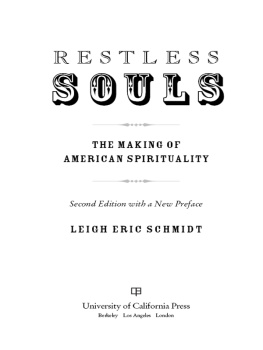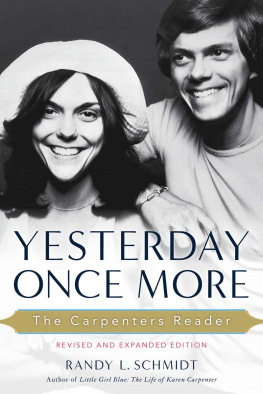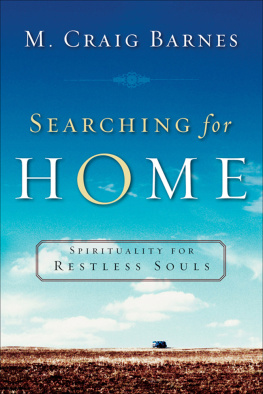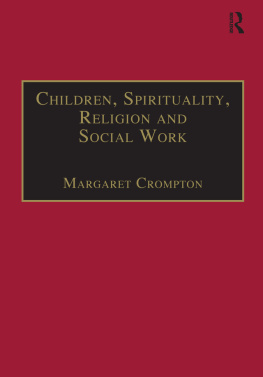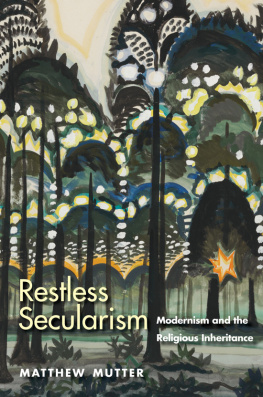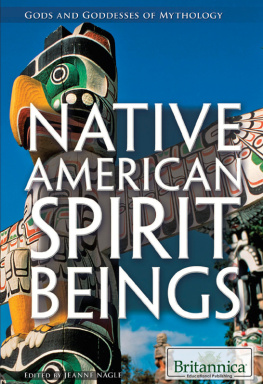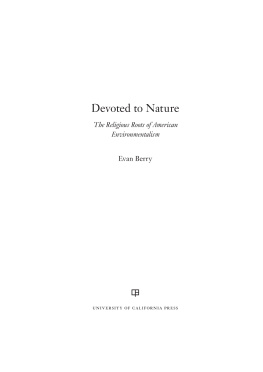CHAPTER ONE

MYSTIC CLUB
A ONE-TIME SPY FOR THE DANISH military, Carl H. A. Bjerregaard (18451922) hastily left Denmark in 1873, a twenty-eight-year-old lieutenant absent without leave, and headed for New York. In the United States Bjerregaard started a new life, first as a factory worker in New Jersey, and then through employment at the Astor Library (soon to form the core of the New York Public Library). In Denmark he had briefly helped curate a natural history museum, so his joining the library staff in 1879 to classify books and recatalog them was not wholly out of character. Soon his military service faded into the past; he spent the rest of his career with the New York Public, eventually heading up the main reading room. That was only his day job, though. In his spare time, with all the library's resources at his fingertips, Bjerregaard fashioned himself into a philosopher, artist, and mystic.
By the 1890s, he was lecturing widely on mysticism, nature worship, and kindred topics. I address you as Pilgrims of the Infinite, Bjerregaard told an audience in Chicago in 1896, for you are pilgrims; I can see that on your faces. You are not pilgrims either from or to the Infinite, but you are of the Infinite. From and to indicate space and time relations, but in the Infinite we recognize neither time nor space; there is no to-day and to-morrow; no here and no there. Eternity is no farther off from the Mystic, than the moment in which he speaks. You are Pilgrims OF the Infinite. Bjerregaard's summons to explore the Mystic Life was heady stuff. It was, among other things, an affirmation of the supreme freedom of spiritual aspirants to seek the truth for themselves and within themselves. The call seemed to resound everywhere: Bible passages, Taoist sayings, pine trees and cones, Jewish Kabbalah, Zoroastrian fire imagery, yoga, Sufi poetry, American Transcendentalism, and the Christian mythology of the Holy Grail.
Bjerregaard's spirituality, like the faith of Ralph Waldo Emerson (18031882), was especially in synchrony with the American lecture circuit. Bjerregaard's favorite place to speak was Greenacre, the summer community that the visionary Sarah Farmer (18471916) founded in Eliot, Maine, in 1894. He saw Farmer's experiment as a realization of his ideas about a universal mysticism and was lavish in his praise of its design. When he gave personal examples of his own exalted experiences, they almost always circled back to Greenacre, whether to a sunrise worship service led by the Zoroastrian Jehanghier Cola or to barefoot walks on the dew-drenched grass. Greenacre is a revelation, Bjerregaard remarked. When you rise from the cool waves of the Piscataqua [River], you rise out of the quiet place of your own soul. As a lecturer, Bjerregaard believed in presentations that were personal and experiential; like Emerson, he did not want to offer secondhand news or disinterested scholarship. Make lecturers, he said, give their own experiences and not something they have read in books and only poorly digested. In soul life no abstract teachings are worth much.

Sarah Farmer's Greenacre community in Maine, with its tent village surrounding a large inn on the shore of the Piscataqua River, provided the setting for C. H. A. Bjerregaard's lectures on mysticism and spirituality in the 1890s. (Eliot Bah' Archives, Eliot, Maine.)
His time at Greenacre in the 1890s provided him with that firsthand material. Of one glistening experience there in 1896, Bjerregaard was especially jubilant:
The first evening I spent at Greenacre, I watched the sunset from Sunrise Camp, and it happened to me as it did to Wm. Blake, I did not see with my eyes, but through my eyes came to my soul the essence of that Golden Ball, and I heard it as Glory to God on HighPeace on EarthGood-will among Men. It was July 5th, 1896, never to be forgotten. It was a gorgeous sunset. All the heavens and the earth were still; the fleeting colors of roseate hues and ashen gray played in incalculable series of mutations. Behind the passing scenes, the glorious orb, incomparable emblem of Being, sank majestically down behind the distant White Hills, and before the scenes, as if in midair, I felt the Becoming. My reason could not arrest the movement, my understanding could not declare what it perceived. The glorious tints, the melting into one another, the lack of fixedness or duration, the deep, yet eloquent and sonorous silence spoke from Heaven and whispered Eternal Harmony.
His lone epiphanies at sunset converged with the corporate prayers of the gathered seekers as they all softly chanted together a newly minted mantra, the now famous Greenacre Uplift: Omnipresence manifest Thyself in me. There on the banks of the Piscataqua River in a tent village, surrounded by fellow Pilgrims of the Infinite, Bjerregaard found his spiritual element.
Mysticism mattered in the 1890s, as Bjerregaard's eager audiences in Chicago and at Greenacre made plain. Across a wide swath of religious liberalism, mystical experience had become a hallmark of religion at its most awesome, profound, and desirable. The new universal mysticism (to which Bjerregaard gave representative expression) served, in turn, as the foundation upon which the contemporary love of spirituality would be constructed. The mother sea and fountain head of all religions, the psychologist William James (18421910) wrote in a letter in June 1901, lies in the mystical experiences of the individual, taking the word mystical in a very wide sense. Understanding how mysticism took on such a wide significance over the course of the nineteenth century is an important step in fathoming how spirituality became such an expansive part of America's religious vernacular in the twentieth century. As Bjerregaard concluded in another series of lectures on mysticism in 1896, A study of the mystics will prove a key by which you can open the doors that lead to Universal Consciousness and Cosmic Emotion, to everything of the New Spirituality, revealed in our day. Bjerregaard's very nomenclature makes plain that the new spirituality, talked up so much as a recent development, is more venerable than novel. He himself stood right in the middle of this transformation, a bridge figure who joined nineteenth-century mysticism to twentieth-century spirituality.
As a matter of course, Bjerregaard saw the mysticism he was preaching as timelessly true. By the 1890s, it had become common intellectual fare to imagine the mystical writers as part of an everlasting coterie, essentially unaffected by clime or creed. Their writings sparkled with eternal verities and ineffable insights into the Absolute; ageless classics, they had neither birthday nor native land. Mysticism has no genealogy, Robert Alfred Vaughan (18231857) commented in his influential Hours with the Mystics in 1856. It is no tradition conveyeddown the course of generations as a readymade commodity. It is a state of thinking and feeling, to which minds of a certain temperament are liable at any time or place, in occident and orient, whether Romanist or Protestant, Jew, Turk, or Infidel.
Such claims only got bolder with time. A history of Mysticism is an impossibility, one writer remarked in 1918 with startling assurance. It has no history. Mysticism as monotony it was so universally the same that it was almost boring: When you see [mysticism] here or there, early or late, you feel perfectly at home with it. You say, Here is the same old thing. It suffers a little, perhaps, from sameness. It would come closer to the truth simply to stand such antihistorical suppositions on their head. The kind of timeless mysticism that Bjerregaard was trumpeting, one could say with a playful contrariness, actually had a very precise American birthday. In May 1896, when Bjerregaard published his first series of lectures on the subject, mysticism would have celebrated its fifty-eighth birthday, its nativity seven years (almost to the day) before Bjerregaard's own birth.
Next page
